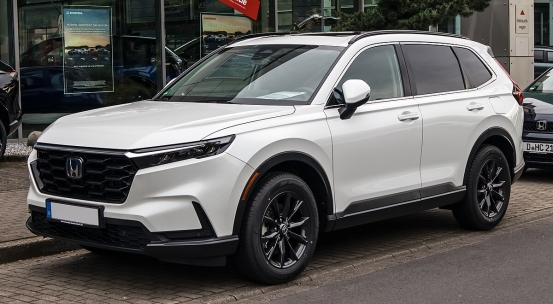The 2025 Honda CR-V continues to excel in the compact SUV category, offering a blend of comfort, practicality, and modern technology that appeals to both families and individual drivers.

Overview and Design
Now in its sixth generation since 2023, the 2025 CR-V maintains its recognizable profile while incorporating subtle updates that improve its overall appeal. The front end features a bold grille, smooth bodywork, and sharp LED accents, presenting a polished and confident look. Inside, upgraded materials and enhanced digital interfaces elevate the cabin experience. Early owners praise its family-friendly design, spacious interior, and intuitive infotainment system, although some note the handling prioritizes comfort rather than sporty dynamics.
Performance and Powertrain Options
Honda offers two main powertrain options for the 2025 CR-V. The base 1.5-liter turbocharged four-cylinder engine produces approximately 190 horsepower and 179 lb-ft of torque, paired with a continuously variable transmission (CVT). The hybrid variant combines a 2.0-liter engine with dual electric motors, delivering around 204 horsepower. Both front-wheel and all-wheel drive are available on most trims. Reviews suggest the CR-V emphasizes smooth, refined driving, with the hybrid providing responsive handling and seamless power transitions. Suspension tuning strikes a balance between comfort and control, even on uneven surfaces. Towing capacity is rated at 1,500 pounds for the standard models and about 1,000 pounds for the hybrid, suitable for light hauling.
Interior, Space, and Comfort
The CR-V cabin impresses with its ergonomic design and roomy layout. Rear-seat passengers enjoy roughly 39.3 inches of legroom, making longer trips more comfortable. Cargo space remains class-leading, offering 39.3 cubic feet behind the rear seats and up to 76.5 cubic feet with seats folded. The dashboard features a horizontal layout with digital gauges (7-inch standard, 9-inch on higher trims) and a central infotainment display. Upgraded materials, soft-touch surfaces, and refined finishes enhance the interior feel. Seats are adjustable and comfortable, and improved sound insulation ensures a quieter ride on highways.
Fuel Efficiency and Economy
Fuel economy continues to be a key advantage. The turbocharged engine achieves approximately 28 mpg city, 34 mpg highway, and 30 mpg combined for FWD models, with slightly lower numbers for AWD. Hybrid variants deliver impressive efficiency, about 43 mpg city, 36 mpg highway, and 40 mpg combined (FWD), with AWD versions reaching roughly 40/34/37 mpg. Real-world driving aligns closely with EPA estimates, and the hybrid’s brief EV mode in city conditions further improves fuel economy and reduces emissions.
Market Position and Value Retention
In the competitive compact SUV market, the CR-V faces rivals including the Toyota RAV4, Mazda CX-5, Hyundai Tucson, and Ford Escape, each offering unique strengths. The RAV4 focuses on hybrid options and strong resale, the CX-5 delivers a premium cabin and engaging driving experience, the Tucson highlights technology and warranty benefits, and the Escape emphasizes engine variety and digital features.
SUV Model | Starting MSRP (est.) | Key Strengths | Fuel Economy (combined) |
2025 Honda CR-V | $28,500 – $39,000 | Reliability, interior space, efficiency | 30–40 mpg |
2025 Toyota RAV4 | $28,000 – $42,000 | Powertrain variety, resale value | 30–41 mpg |
2025 Mazda CX-5 | $27,500 – $40,000 | Driving dynamics, upscale interior | 26–28 mpg |
2025 Hyundai Tucson | $27,000 – $38,500 | Warranty, tech features | 29–38 mpg |
2025 Ford Escape | $28,000 – $39,500 | Technology, engine variety | 28–37 mpg |
Honda’s reputation for reliability helps the CR-V maintain strong resale value. Historically, it depreciates slower than many competitors, with three-year projected residuals exceeding 60%. For drivers seeking a reliable, efficient, and comfortable SUV with lasting value, the 2025 CR-V remains an excellent choice in its class.
